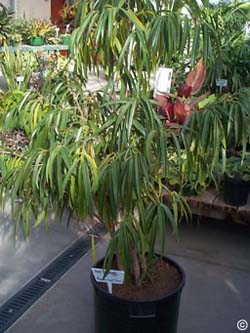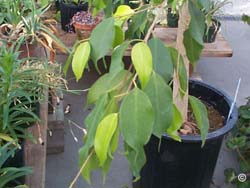
Weeping fig is the most common indoor tree used in homes, and is available in green or variegated forms. They’re beautiful plants, but aren’t always easy to grow because they’re sensitive to environmental changes. As a result, you’ll need to avoid placing weeping fig plants near drafts. You also will need to provide consistent light intensity and watering regimes.
Weeping figs can grow very tall and may be used in areas with cathedral ceilings to provide a dramatic effect. The growth rate of this plant is relatively fast.
 Weeping figs generally prefer moderate to warm temperatures in the home, and tolerate medium to very high light situations. For best results, keep soil evenly moist and avoid low-light situations. Variegated forms of this plant require more light than the solid green forms. You can use weeping figs as a potted plant, bonsai or as a specimen plant in the atrium.
Weeping figs generally prefer moderate to warm temperatures in the home, and tolerate medium to very high light situations. For best results, keep soil evenly moist and avoid low-light situations. Variegated forms of this plant require more light than the solid green forms. You can use weeping figs as a potted plant, bonsai or as a specimen plant in the atrium.
Spider mites, mealy bugs and scale insects are occasional pests on weeping figs, which are relatively disease free. Weeping figs don’t require frequent fertilization. In fact, excessive nitrogen fertilizer application stimulates lush, spindly growth.
For more information, see the following Colorado State University Extension fact sheet(s).



